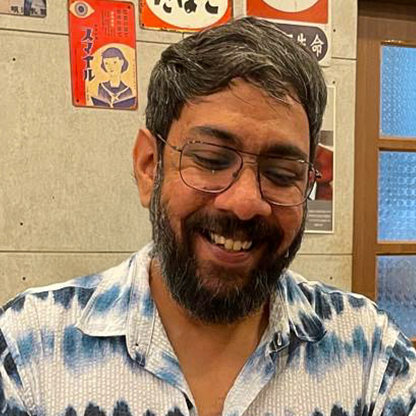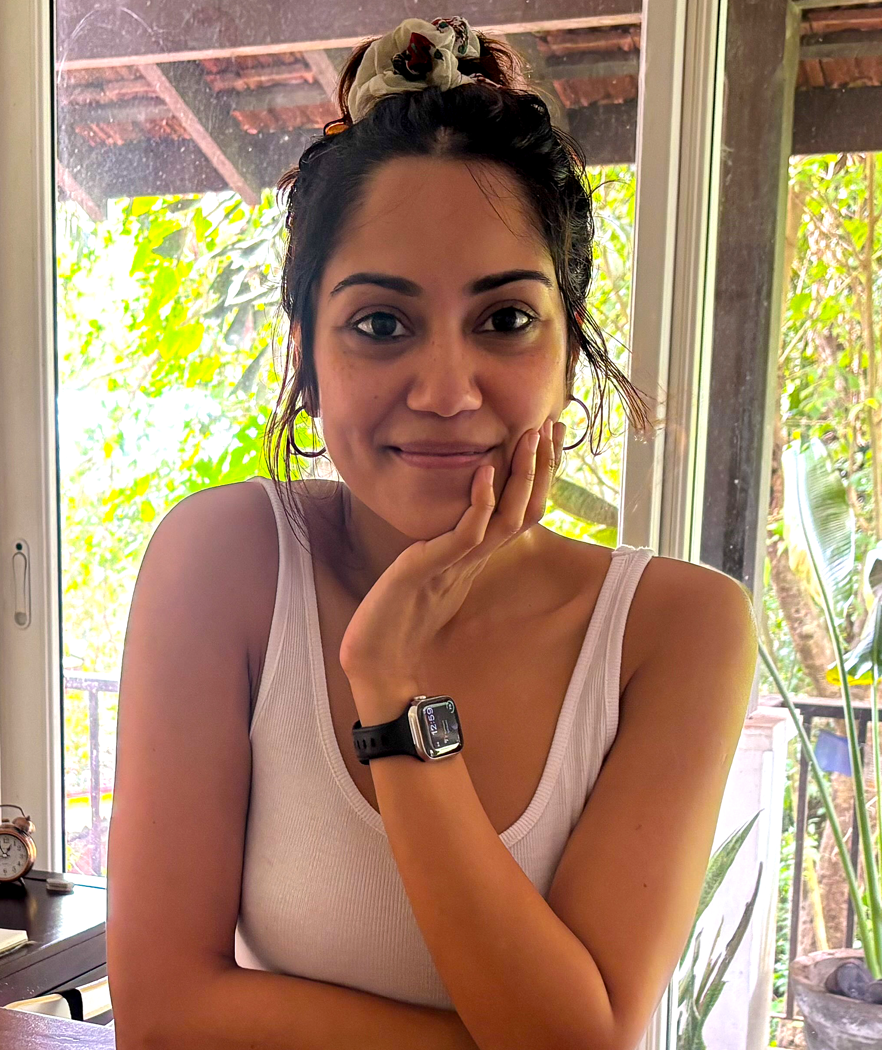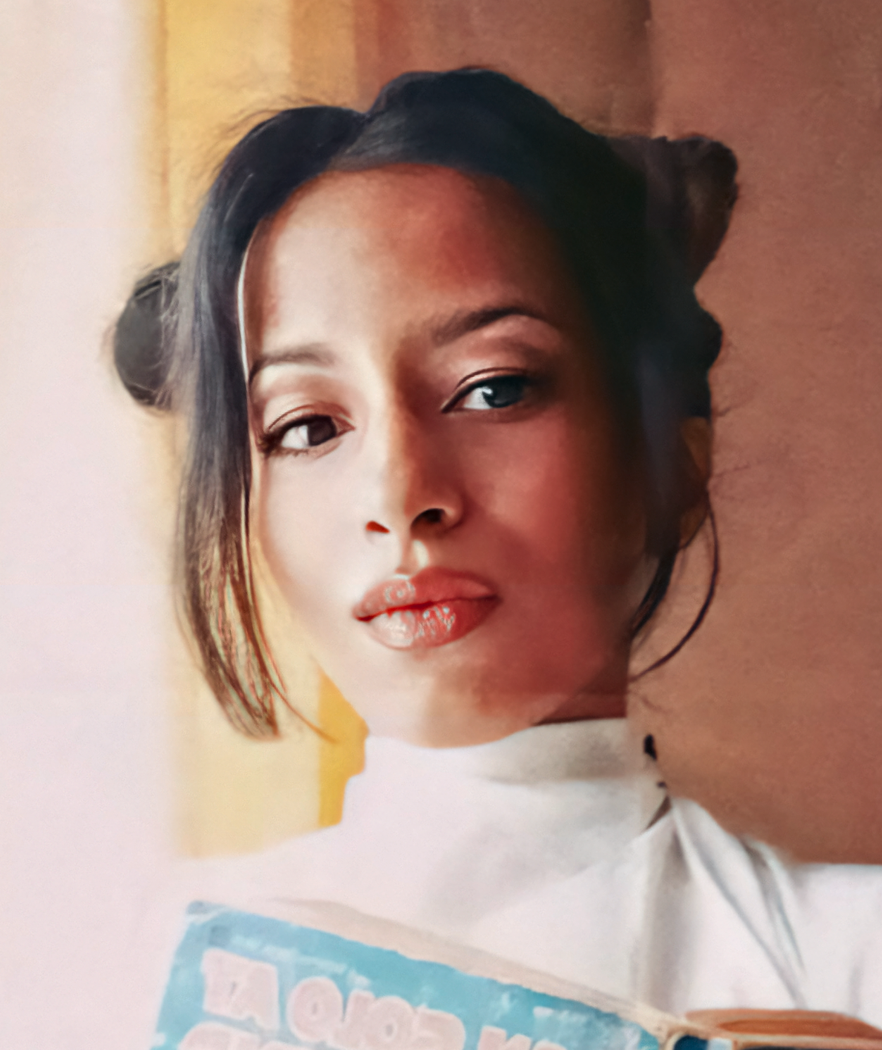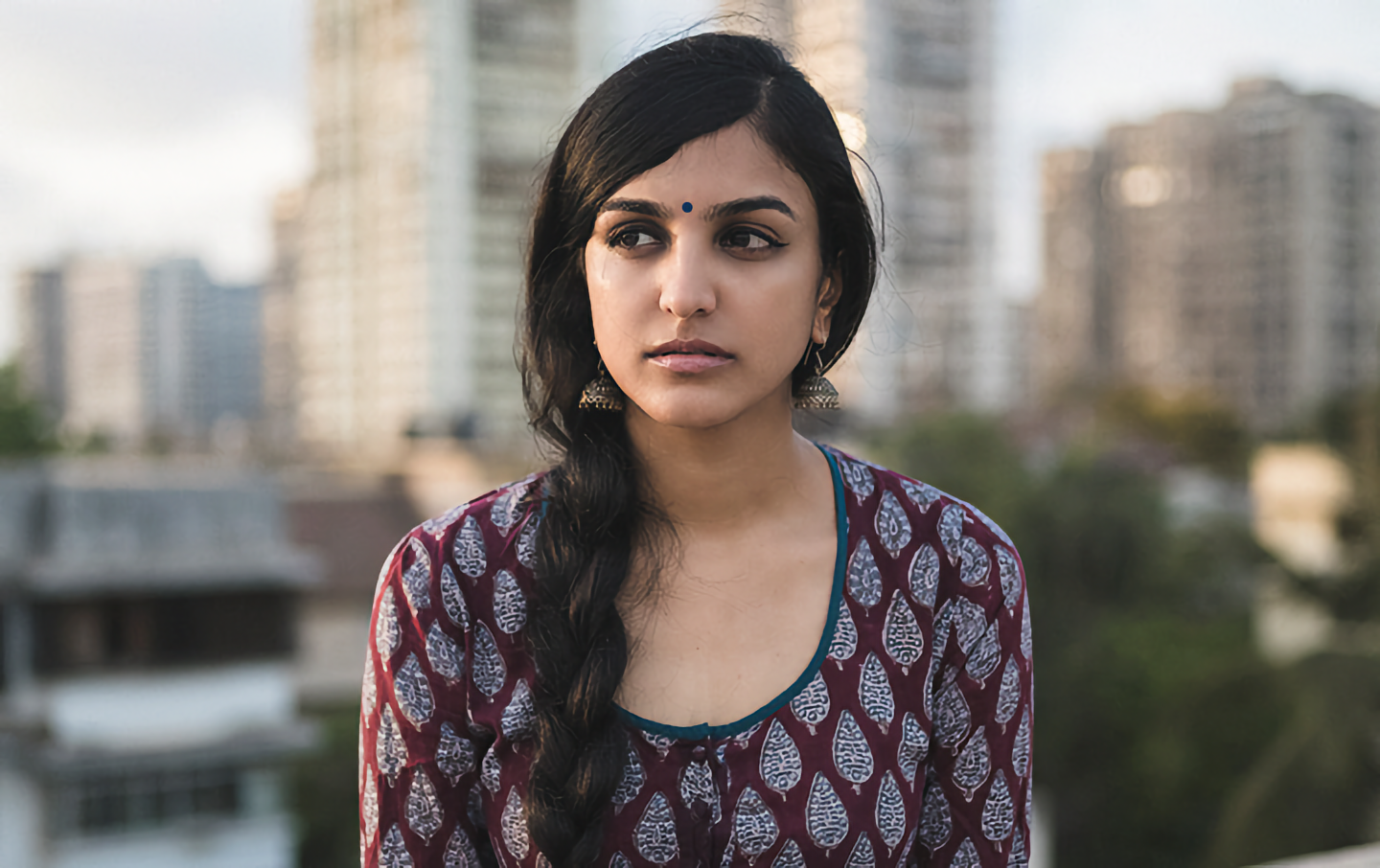Prarthna Singh is one of India's most promising young photographers. Currently based in Bombay, she is deeply interested in the transitional nature of modern India, and manages to strike a keen and meaningful balance between her personal and commercial work. She is a graduate of the Rhode Island School of Design, and her work traverses across digital, film, and video mediums.
Read on for excerpts from a conversation with Prarthna about finding her voice, her evolution as a photographer, the opportunities and challenges photographers face on social media, working as a woman in Delhi and Bombay, the lack of platforms for independent storytelling in India, and making more spaces for women to showcase their perspectives and work.
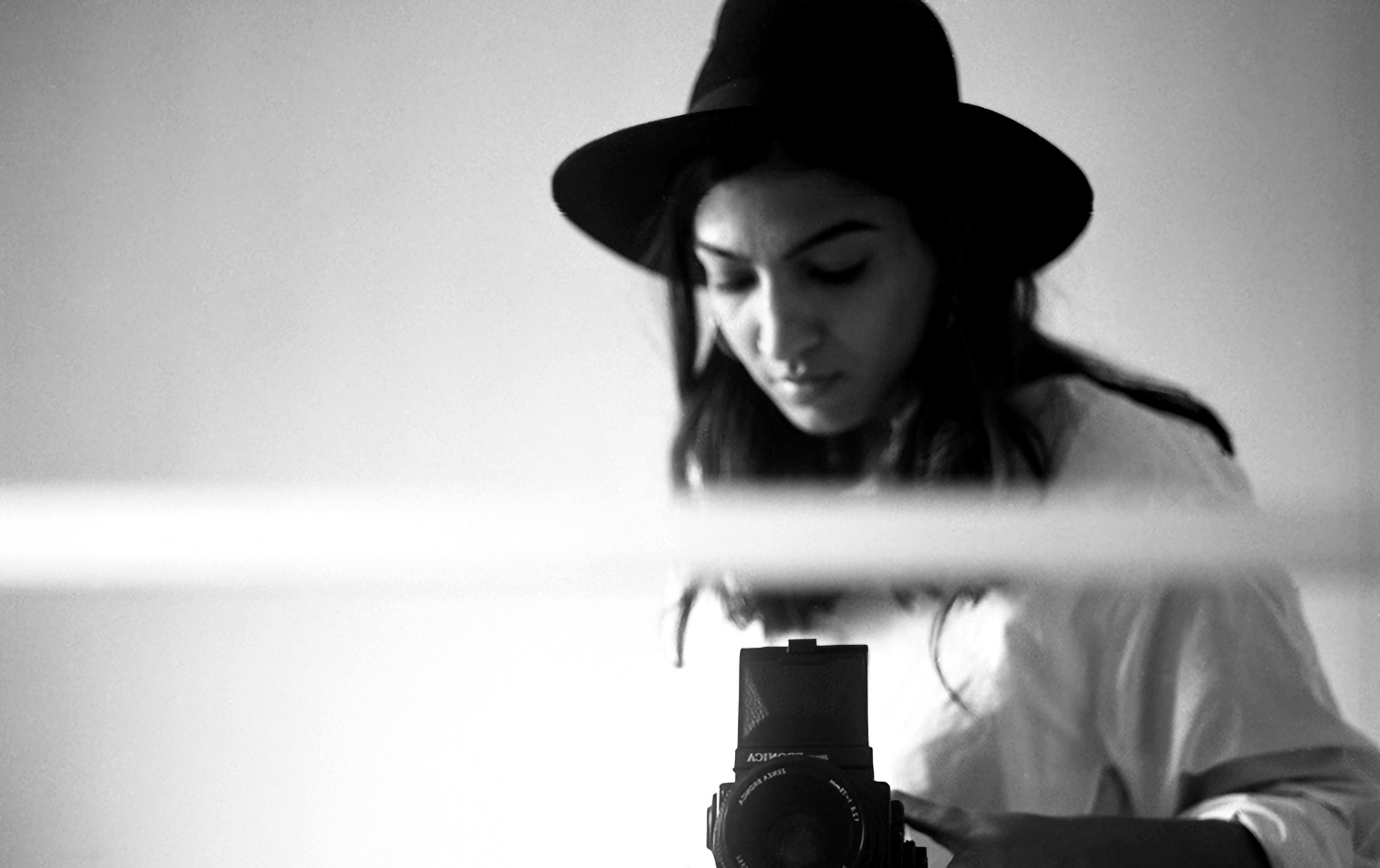
Where did you grow up? What was your neighbourhood like?
I grew up in Delhi. I went to school there, and later went to a boarding school in Rajasthan. My schooling was fairly insignificant—it was fine. I was not entirely into it. I wanted to do something in the arts and the options [in school] were very limited. I was always creatively inclined, but it was only when I went to college that I found my footing.
For my first two years, I was at a liberal arts college in Florida. It was really good, but it wasn't an art school, and somewhere, I always knew that I wanted to go to an art school.
What was Florida like for you?
It was nice (smiles). Honestly, it was two years of having lots of fun and making lots of friends. Leaving the country [India] and living outside for the first time was great exposure. I think Florida was a good place to start for me, because the college was very small and had a sense of community. It wasn't like going to a big school like U.C.L.A., where there are a hundred students in each class. We had about 25 students in each class. It was a lot more intimate, we had a small campus that was very warm and friendly. I'm glad I had that experience.
I transferred to the Rhode Island School of Design (R.I.S.D.) after two years to make that art school dream of mine a reality. I'd already started taking some photography classes when I was in Florida—that's when I initially started using a film camera and just shooting. I remember I had a Nikon FM2 that I'd bought secondhand. I learnt how to develop film and I'd basically just spend all my time in the darkroom.
Did you always know that you wanted to be a photographer, or were there other creative paths that you flirted with as well?
I had this dream that I would be a painter, which was clearly shattered after I took a few painting classes, like maybe not (laughs). People kept telling me that painting doesn't need to have a style, you can be as abstract as you like, but I felt that it wasn't working out. But yeah, I took a few painting classes, I learnt print making, I did sculptures, some video editing.
When I transferred to R.I.S.D., I realised that I had so many more options, because they have so many more departments in the arts—jewellery, apparel, print making—and they get really specific. Having so many options also helps your discipline. Transferring there really shaped the way I think, even now, as a photographer and the way I work, because R.I.S.D. really instils a sense of rigour. The critiques were rough, and often you felt like you weren't good enough. When you're starting, that can be quite heartbreaking because you're just about getting into it and figuring out your style. But it does push you to get better and it also helps that your peers and professors are quite remarkable and inspiring. It's a good space to be in if you really want to just immerse yourself, you know?
If I had gone to another art school, perhaps, like Parsons or S.V.A., I would have had a very different experience. Those schools also set you up commercially, to some extent. At R.I.S.D., they prefer putting all that aside for later—while you're at the college, you just focus on making work and being an artist. I think that's quite a refreshing way to look at it and gives you a lot of room. In those four years of college, you shouldn't have those strings and pressures [of making it commercially], you should just be exploring the kind of work you want to do. That's what I did.
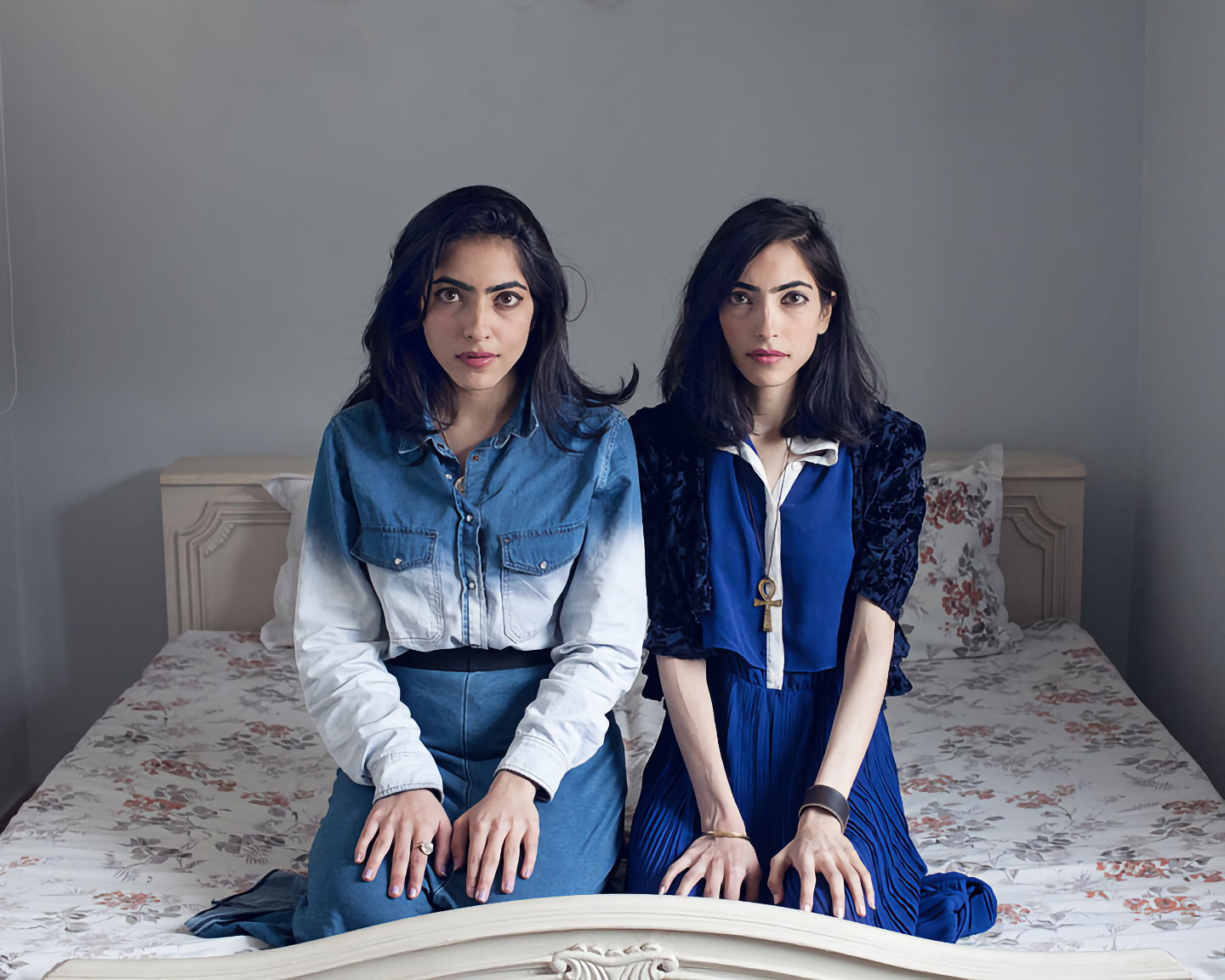
When you first picked up that secondhand Nikon camera, did you have a vision for yourself? Did you want to be a certain kind of photographer, or make specific kinds of images?
My mom was always obsessed with photography in a weird way. She would make us pose for pictures for hours, and I used to find it very annoying. Now, I pretty much do the same thing, so you know... (laughs)
(Laughs)
I mean, I think somewhere, I always knew I was drawn to people. Broadly I knew that I'm not going to become a wildlife or landscape photographer, and I felt a strong urge to tell stories. A lot of my work comes from making human connections, with an emphasis on female-centric narratives. Sometimes it's conscious, and sometimes it's not—it just happens. It depends on what you as a person are drawn to or want to be surrounded by, because your work is something you're constantly surrounded by. You can't really detach and leave one day and say I'm done. It's what you're consciously and subconsciously building around you. With that in mind, I'd definitely say I wanted to do portraiture.
Are there any photography projects that you worked on before you went to R.I.S.D. that you still remember and are proud of?
I was 17, and doing what teenagers do basically (laughs). And I had my camera. It was all just photographing my friends. But it was a really good time to become comfortable with my tools, because I was also just learning them. I feel like the older you get, the more restrictions you put on yourself. Now, if I'm going to take a picture, I'm like it has to be like this, and I'm going to change the surroundings, and the light has to be a certain way—and that's all great. Of course, that comes with learning. But I also feel that sometimes, it takes away the freedom that you have when you're young, when you have your camera and you're just shooting. When I look back I'm really glad that I took all those photographs. I was so free, and no one could have told me what to do or how to set up those photographs. I was shooting a lot of the people that were around me—my family, my friends, people that I met. I did some street photography, but again, I was never really drawn to that documentary style. It was always more personal for me.

“I always knew I was drawn to people. A lot of my work comes from making human connections, with an emphasis on female-centric narratives.”
What was life like immediately after R.I.S.D.?
It was a bit shitty, to be honest. I was in America—I moved to New York. It's an amazing city to be in, but also very hard to live in when you're just out of college, especially when you don't have a job. And it was around the time of the recession, so it was even harder. I was there for a year-and-a-half, and I have to say that I got really lucky in that I got to work with some really great photographers. I worked with Nathaniel Goldberg, and sometimes my job included running errands and doing odd jobs, like walking his dogs.
I was assisting, I was doing work to make ends meet, shooting people's Christmas cards, I was babysitting—I'm not the best babysitter, I don't think I would do that again (laughs). But I think I really had to go through that to understand that okay, there's this side of photography, and then there's this whole other aspect of 'I need to survive and be a photographer and make money from this craft'. Overall, it was a bit rough, but again, I was young, and living in New York, and you know, figuring it out (smiles).
At the time I was looking at it as just one job to the next. I needed to make some money, I needed to pay the next month's rent. I didn't really have the headspace for personal projects. To be honest, I think I really took my time to sort of get into that. Now, when I look at some young photographers, I feel like they're very mature for their age. For me, it was slow—it was a couple of years after I left New York and came back to India, that I started to realise the kind of work I wanted to make, to consciously move towards that. I think a lot of that is also everyone's own journey, right? Some people know immediately that they want to be a fashion photographer, and they want to work with magazines, and they figure out the three best magazines, and just go for it. It took me some time to figure out what kind of work I wanted to do, both commercially and with my personal projects.
Did the move back to India and your exploration of the kind of work you wanted to do make you question your place in the world?
I mean, I do that even today (laughs).
(Laughs)
Yeah, you're constantly questioning yourself. I think one thing I've never questioned is what I'm doing—artistically, I'm very sure that photography is my medium.
You've worked in fashion. Did you enjoy that aspect of photography?
(Laughs) Yes. And no. With fashion photography, I've always said that it can be both terribly inspiring and terribly... I don't want to say superficial, but it can be superficial. It depends on how you approach it. I want to say that I've really made an effort over the years to try and approach it in a more conscientious manner.
How do you prefer to approach it?
The nature of the fashion industry is such that it demands high quantity cyclic creations and often this begins to affect the quality of work. The positive side to this is that a lot more work is being generated, on the flip side there is a fair amount of mediocre work being put out. Especially now, the way things have gone because of social media. If you're a brand, you need new content every day, and because of that people are shooting a lot, and there are a lot more people in the field. In my work I remain committed to working with, but also beyond, the temporary nature of the medium.
One thing about fashion is that it's greatly appreciated, and you can't take that away from it. People are completely wowed by it. But after a while I felt like I was doing the same thing over and over again, and I didn't really get into editorial work with magazines. Not many publications approached me with editorial work—in India, people like to put you in boxes, and I was becoming known as an 'arty photographer'—and to be honest, I never really pushed for it either. But I have to say that I really enjoy the working relationship I have with a few designers, whom I now also consider my friends. These are the people that I work with regularly, where it doesn't feel like a job. It's a lot more collaborative and we can discuss both our creative processes; where I'm coming from and where the designer is coming from. That is a lot more exciting for me.

Why do you think there is so much repetition in fashion photography and perhaps other creative fields? Is it because there isn't enough innovative art direction involved?
Absolutely. I think that's a big problem. The role of an art director is really undervalued. In fact, most times on a shoot, there is no art director. Personally, I find that to be very problematic. At the end of the day, I'm a photographer, I have my vision. There's a stylist, who has their vision. There's a make-up artist, there are so many other elements. Fashion is collaborative, and the art director's job is really to get in there and bring it all together. And that person doesn't exist on most shoots. Maybe it's different for other photographers, maybe they feel like they are going to play the role of an art director.
It needs to be a more specialised role.
Yeah. I think so. It is a very specialised job, and it only makes my job as a photographer easier. It doesn't take away from you in any way.
What was moving back to India like for you?
I moved back to Delhi, where I'm from. And after living in a city like New York for almost two years, when you move to Delhi—and this is Delhi 10 years ago. I mean, I want to say a lot has changed in Delhi in the past 10 years, but there is a lot that hasn't changed if you're a woman and living in Delhi. I wasn't happy, but I had to come home, and that's what I did. I worked in Delhi for eight months, but pretty soon I realised that I had to get out. If I had to live and work as a photographer—if I wanted to be a normal, thinking human, then I couldn't live in Delhi. It felt like the city was clipping my wings. Around the time, my boyfriend dumped me, and it felt like an amazing reason to finally leave (laughs). I literally got on a flight two days later and came to Bombay (laughs).
What did moving to Bombay feel like?
It was life-changing, to know that there is a city like Bombay that exists in India. For most of my life in Delhi, I was constantly reminded of my boundaries. Not that people are wrong when they say that, they're completely coming from the right space. When I came to Bombay, I felt a sense of freedom. It was also a time when a lot of magazines were entering India (in 2008). There was a fair amount of work, so I got some jobs, started making some money, and slowly kickstarted my career.

“I want to say a lot has changed in Delhi in the past 10 years, but there is a lot that hasn't changed if you're a woman and living in Delhi.”
About the personal projects and series that you've worked on: did you have them in mind for a while before you were able to work on them, or did they come to you when you became more comfortable and settled with the commercial work that you were doing?
I think I was always making pictures for myself. That's not something that I ever stopped. I think people have a lot of different ways of approaching their own projects. I must have tried them all and I still don't know what the right way is (laughs). I think a large part of my work ends up revolving around making a lot of pictures and then looking at them and asking where my brain is at—[there are] thoughts and ideas and emotions associated with them that are always in your subconscious mind. When you're taking a picture, you know why you want to take the picture, and why you're drawn to the subject, or what you feel when you take the picture, or when you enter the space. It's so funny, even the work that I have on my website right now is barely skimming the surface of the projects I have open. It's about making connections for me, but my manner is slightly haphazard. Maybe other people have a clear vision and go into it in a more focused way.
Do you like to set aside time for your personal work, or do you work on it whenever you have some free time from your commercial work?
No, you have to set aside time, and often that's not the easiest thing to do, especially because it requires you to isolate yourself from everything else. Honestly, I only manage to do it maybe once a year.
Let's talk about some of your projects. How did The Wrestlers come about?
It was through a chance meeting. I met one of the girls (wrestlers) in Bombay when I'd gone for some physiotherapy. I was immediately drawn to her physical form. As a woman, it was amazing to see her and the way she was. Later I visited her and made a picture. At the time, she was staying in a service apartment at the time and the picture didn't encapsulate what I wanted. Through our conversation, she suggested that if I really wanted to make some pictures, I should visit their camp in Lucknow, where girls from all over the country come to train. It sounded amazing. But getting to that camp wasn't easy. In photography, one aspect is, of course, going and making the image, but the other very important aspect is access. Getting that access, making your way into a space without being invasive, and building a comfort level with your subject. If my approach was more documentary in nature, perhaps I'd do things differently; be a fly on the wall and just document their everyday lives. But in my process, I needed their time. It took about four months for me to get access to the camp, but in the end it was worth it.
Once I got there, the girls were just incredible. Their entire life is dedicated to the sport. Their bodies need a lot of rest. If you're training for four hours in the morning, then you need to eat and sleep, and train again for four hours, then eat and sleep. In the midst of their intense training schedule, I managed to spend some time making their portraits. Competing at such a young age comes with its own set of insecurities. Putting aside all the battles they have fought to make their way here, when you watch them on the mat they are nothing short of fierce. There's this interesting contrast between these childlike, vulnerable girls who are talking about their favourite movie stars and ice cream flavours, and the same girls who are competing for their country and bringing home accolades. It was exciting for me just to be around them. I wanted the images to be stoic and powerful, while celebrating their true form.

“In photography, one aspect is, of course, going and making the image, but the other very important aspect is access. Getting that access, making your way into a space without being invasive, and building a comfort level with your subject.”
You've mentioned before that one of the things that interests you is capturing stories from an India in transition. Is that something you think about a lot?
That is something I've lived through. Even now, I say that I'm working as a female photographer and I've been telling stories that are female-centric for the past 10 years, but a story like The Wrestlers, for instance... I don't know what it was like for women to be wrestlers in India 10 years ago. I know the sport just got introduced to the Olympics very recently. So yeah, if there is an opportunity to document this change, that's great. And from a Western point of view, or for a Western audience, the kind of stories that are going out from India are not stories of empowerment, you know? I think, for me, it was very exciting to tell a story of empowerment, and more specifically, to tell a female-centric sports story of empowerment. When that work got appreciated, I was quite excited. People were straight-up asking me questions like, 'Oh, women in India... wrestle? They're allowed to play sports?' And this is from an international audience. Changing this perspective and bringing newer stories is really important for any photographer working in India right now. For me, it feels like it's my duty at some level, and 'India in transition' sort of describes all the stories I've been working on, about how everyone is fighting their own battles.
Tell me about your Girls project.
Growing up as a girl in India, you are constantly bombarded with questions. The questions don't concern your work or your career, it's always: 'Are you planning to get married? What's your plan in life?' It happens all over India, no matter how progressive or open you think your parents and family are, at some point you will face these questions. As women, we all have our defence mechanisms, and we've all learnt how to fight it. There's a collective sense of vulnerability that women share, and I was interested in exploring that space with Girls.
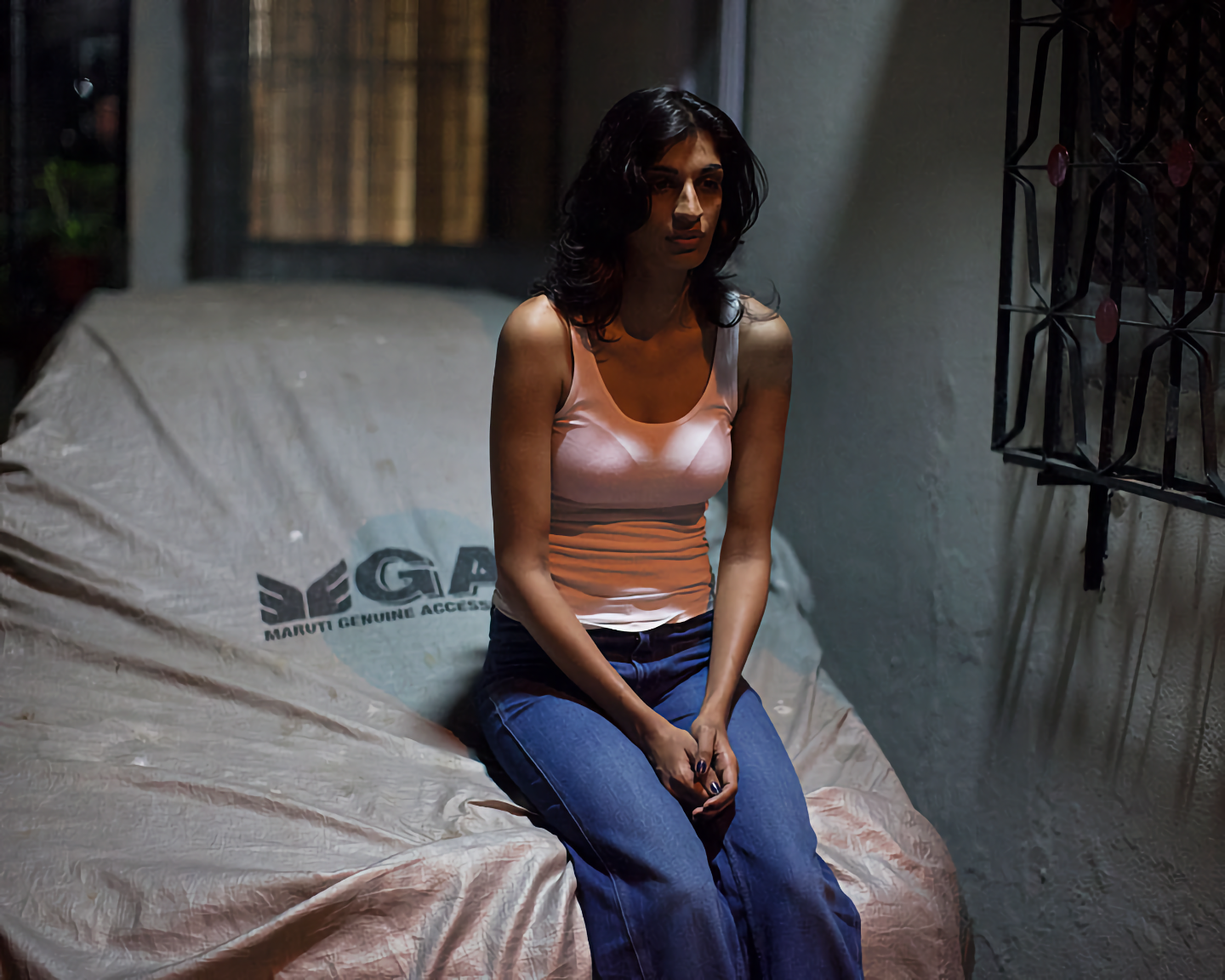
How did you go about identifying your subjects for that project?
Some of them are people that I know that I approached. A lot of them are people that other friends of mine knew, and the word spread. I reached out to some people on my own as well, even those that I didn't know, via Twitter or Instagram.
I know you mentioned that a lot of your photo series are ongoing projects, but when you compile a project like The Wrestlers or Workforce or Girls, do you think about how you're going to get the work in front of people? Publishing it, showing it at a gallery, submitting it to competitions?
Finding the ideal way to share your work is important. I'm very bad at that side of things (laughs). I feel like I constantly have to push myself to be like, 'okay, now do something with this, send it somewhere'. I'm ruled by self-doubt (laughs). Within India, unfortunately there aren't too many people who are looking to publish independent photo stories. Fashion has a big space, but independent storytelling? I don't think it does. Also, where are our independent publications? Whom would I send my work to? Luckily, with The Wrestlers, it got people's attention internationally, and it was shared at various shows in England, Scotland, and Spain.
Do you think it's because people just aren't thinking about these kinds of stories?
The big problem is the lack of platforms.

“Finding the ideal way to share your work is important. I'm very bad at that side of things. I'm ruled by self-doubt.”
Why do you think there are so few platforms for independent storytelling in India?
I don't know, you tell me (laughs). Do you have any answers for me? What do you think?
Has this ever come up in your conversations with other photographers?
I don't know. There used to be a publication called Motherland that I did a few stories for. It was great, and then it folded, sadly. I don't know much about the finance or business side of these things.
There aren't enough exhibitions or shows by women at galleries in India. Why do you think that is? Is there some kind of block at a curatorial level?
(Laughs) I was just having this conversation the other day. I think there's just a lack of people consciously reaching out [to women]. Both women and men in positions of power who could be the agents of change need to work harder to bring about this change. Especially in India, things haven't moved in that direction at all, whereas all over the world, things are changing.
Do you see things changing in India in the next 10 years or so?
I hope they can change. I recently reached out to an editor after seeing a story about women fighter pilots. As delighted as I was to see the story, I was also genuinely curious to know if they had considered working with a woman to document it. I'm not saying that every woman-centric story needs to be photographed by a woman—not at all—but I wondered if it was even something that crossed the editor's mind. Recently they did a story about women in film and they reached out to me [to work on it], and I was thrilled to shoot it. I think it's important to just have these conversations, to just put it out there. Like hey, this is great, but did you think about this? Could this have been better? Can we change this around? Can we find a way to make things more inclusive? The space has been occupied by the same people (a majority of whom are men) for years. Their work is great, they deserve all the plaudits, sure. But make some room. That's it.
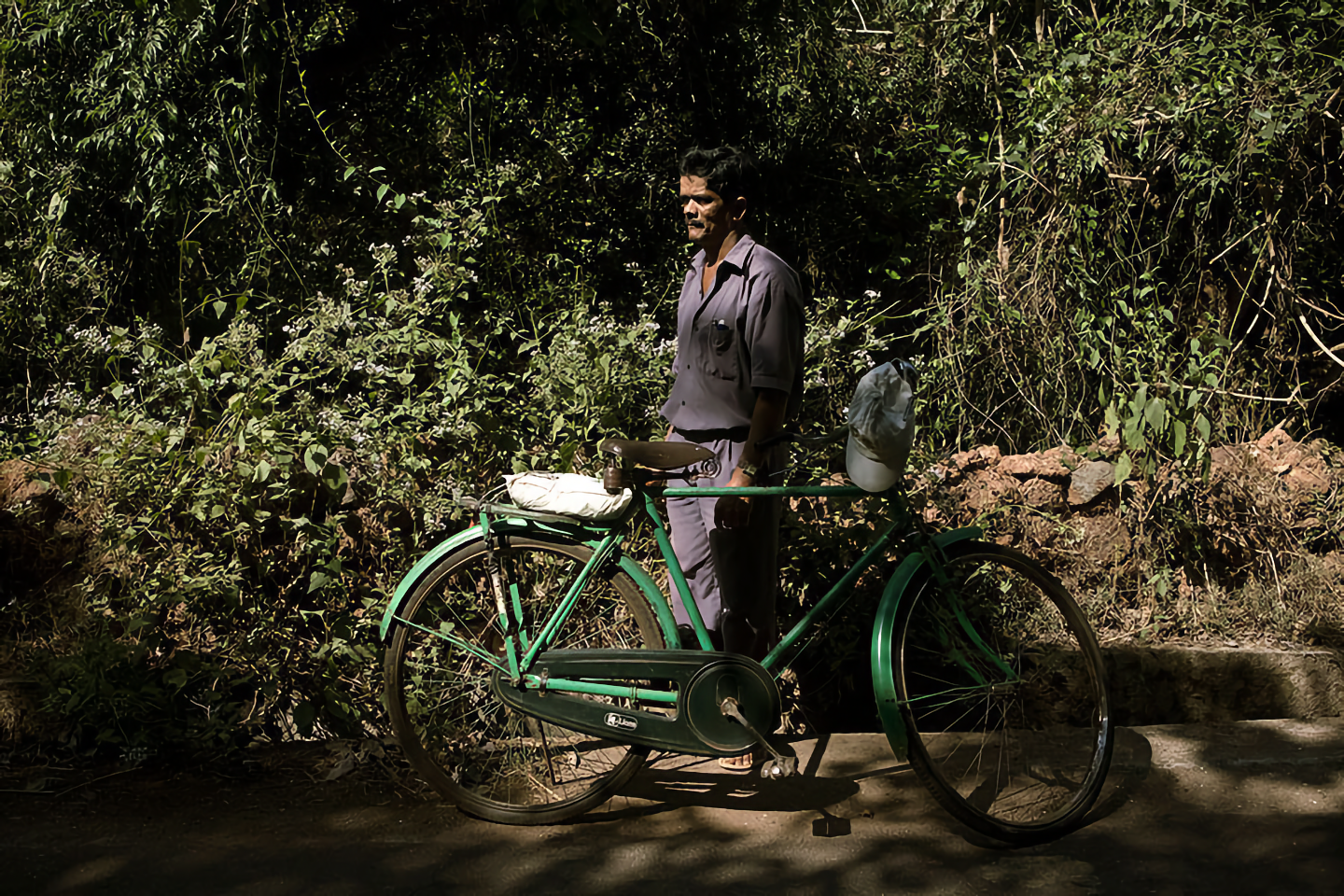
How do you look at a platform like Instagram, especially for younger photographers?
I think it's completely changed the way people share their work.
You're pretty active on Instagram. How do you use the medium?
I'll usually just share individual images when I feel like putting some work out there. But I also feel quite conflicted, because it's a little bit like crack, you know? You do feel like this weird sense of accomplishment when you put up a picture. I feel like I need to distance myself from that. The nature of it is such that you put something out and people are immediately engaging with it; it's such immediate gratification that it's so hard not to get sucked in. It can give you a false sense of accomplishment.
As a photographer, do you feel like it strips your work of its context?
Absolutely. And I see that even within my own feed. At the end of the day, I feel like it serves as a good place to give people a glimpse of my archive. Since people don't take the time to check out websites any more, Instagram is where it's at now. People are finding work through it, reaching out to photographers through it. I'll admit I've made some pretty interesting connections through Instagram, and I enjoy seeing how people all over the world are making their art—what they're shooting, what they're shooting on, what their process is—it helps to get some perspective.
On the flip side, it can be like going down a dark hole, in that I could be checking things off my list, but instead I'm watching a video of a cat climbing up this lady (laughs). I really have to have restrictions for myself.

“Can we find a way to make things more inclusive? The space has been occupied by the same people (a majority of whom are men) for years. Their work is great, they deserve all the plaudits, sure. But make some room.”
Is it important to you as a creative person to feel like you belong to a community?
I want to say yes, and no. Maybe it's similar around the world, but I've often felt that in India, things tend to become clique-y, and I've always preferred to do my own thing. It feels like people just sort of have their backs turned towards you. Any space that seems less inclusive has not been one I've wanted to be a part of. But a lot of my friends are musicians, filmmakers, actors, designers. It's nice to have creative conversations that go beyond photography.
If you had to give advice to younger photographers, what is the one thing you would tell them not to do?
I think that everyone has to do the things that you shouldn't do to really figure them out on your own (laughs).
Have you ever considered teaching photography?
I feel like it would be like my dad's dream come true, if I taught photography (laughs). I don't know if you can teach someone to be a good photographer. You can teach someone how to ask the right questions, and perhaps help them to figure out why they're doing what they're doing and how they want to take their ideas forward. I have done some workshops before. Public speaking is not something I'm entirely confident about, but maybe it would be nice to do it at some point. I'd especially be interested in working with younger women photographers and women who aspire to become photographers.
The Setup / Prarthna Singh

"I like to carry a Bronica 645 medium format camera and a Minolta light meter with me on my travels."


